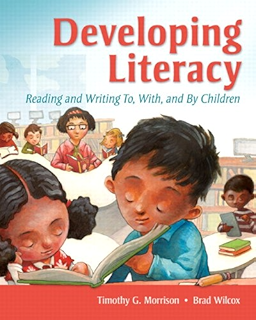Burns And Roe Informal Reading Inventory 7th Edition
As a classroom teacher, reading specialist, and university professor, I have always found helpful published summaries or syntheses of professional-related information relevant to my work. In this article, I review the current editions of eight informal reading inventories (IRIs) published since 2002 that are available at the time of this writing. Specifically, I identify key issues surrounding the use of IRIs and examine ways in which the various IRIs reviewed approach them. A goal of this undertaking is to guide teachers, reading specialists, reading coaches, administrators, professionals in higher education, and others charged with the education or professional development of preservice or inservice teachers in their quest to find IRIs best suited to their specific needs. I hope the findings point to new ways in which IRIs can be made even more effective in the near future.

Informal Reading Inventory: Preprimer to Twelfth Grade. Informal Reading Inventory. 10th Edition; INFORMAL READING INVENTORY.
Roe Informal Reading Inventory Seventh Edition Plus Guide to Teacherreflection Plus Guide to Assessment Plus Guide to Differentiatinginstruction Paperback Books- Buy. Luna Maya Dan Ariel Peterpan. Informal Reading Inventory. INFORMAL READING INVENTORY, 8th Edition. Betty Roe, Paul C. Burns: Edition: 8, braille: Publisher.
What are informal reading inventories (IRIs)? IRIs are individually administered diagnostic assessments designed to evaluate a number of different aspects of students' reading performance. Typically, IRIs consist of graded word lists and passages ranging from preprimer level to middle or high school levels (Paris & Carpenter, 2003). After reading each leveled passage, a student responds orally to follow-up questions assessing comprehension and recall. Using comprehension and word recognition scores for students who read the passages orally, along with additional factors taken into consideration (e.g., prior knowledge, fluency, emotional status, among other possible factors), teachers or other education-related professionals determine students' reading levels. They also use this information to match students with appropriate reading materials, place children in guided reading groups, design instruction to address students' noted strengths and needs, and document reading progress over time. While IRIs serve a variety of purposes, perhaps their greatest value is linked to the important role they play in helping educators to diagnose the gaps in the abilities of readers who struggle the most.
Based on notions implicit in developmental (Chall, 1983; Spear-Swerling & Sternberg, 1996) and interactive models of reading (Rumelhart, 1977; Stanovich, 1980), IRIs provide information about students' reading stages and knowledge sources. For example, by charting and analyzing patterns in oral reading error types, educators identify whether students rely on one cueing system (i.e., graphophonic, syntactic, or semantic cueing system) to the exclusion of the others, as beginning readers typically do, or if they use a balance of strategies, as mature readers at more advanced stages do in their reading development when they encounter challenges while processing text. Supplemented by other measures of literacy-related knowledge and abilities, as needed, IRIs contribute valuable information to the school's instructional literacy program. Rationale for selecting IRIs to evaluate Given the sweeping, education-related policy changes associated with the No Child Left Behind Act signed into U.S.
Law in 2002, the IRIs included in this analysis were limited to those published since 2002 because it was felt that they would be more likely to reflect features relevant to the policy changes than IRIs published earlier. For example, federal guidelines specify that the screening, diagnostic, and classroom-based, instructional assessments used by schools receiving Reading First grants to evaluate K-3 student performance must have proven validity and reliability (U.S. Snow Leopard Iso there. Department of Education, 2002) — aspects noted as weak with regard to IRIs published earlier (Kinney & Harry, 1991; Klesius & Homan, 1985; Newcomer, 1985).